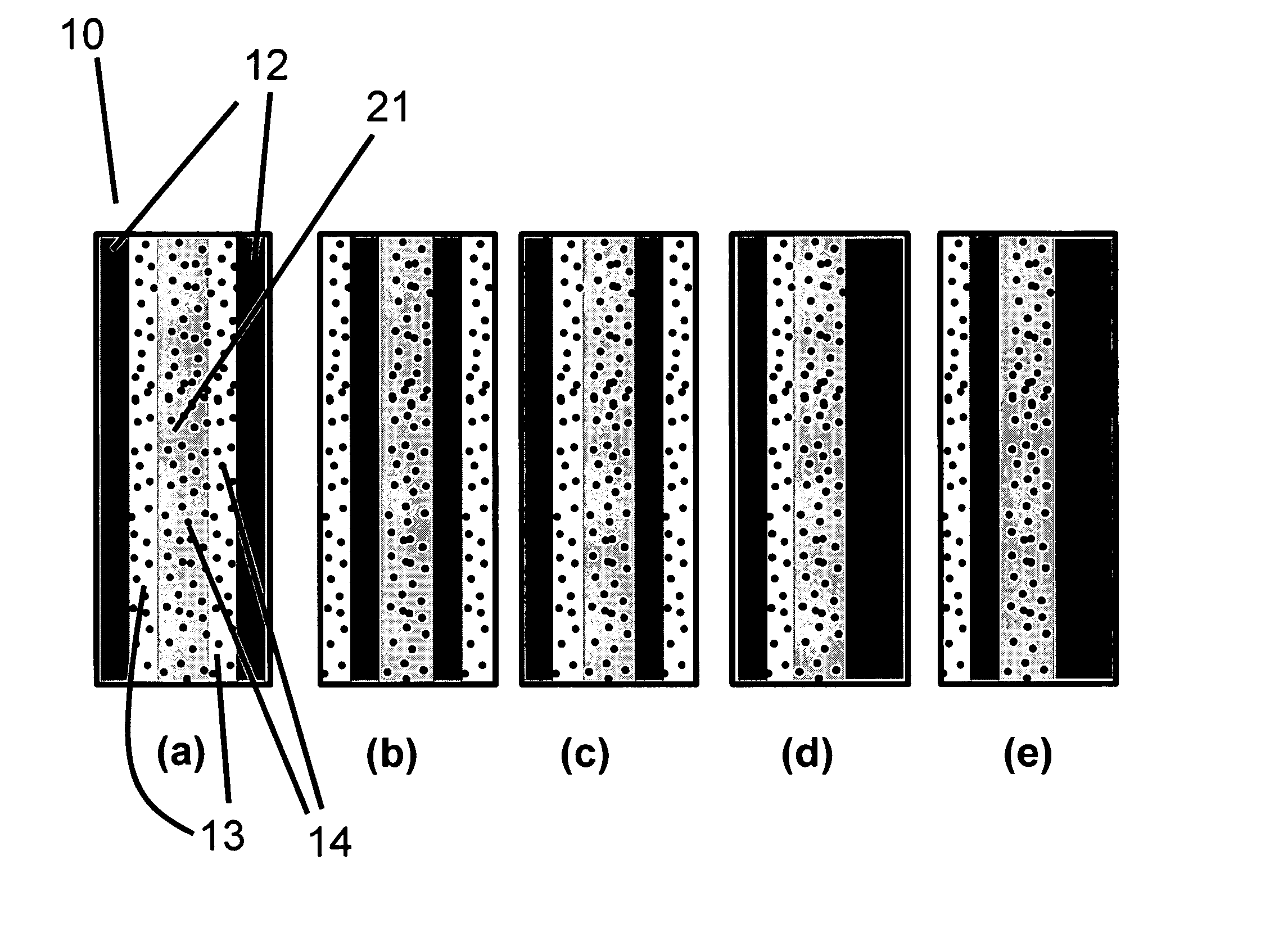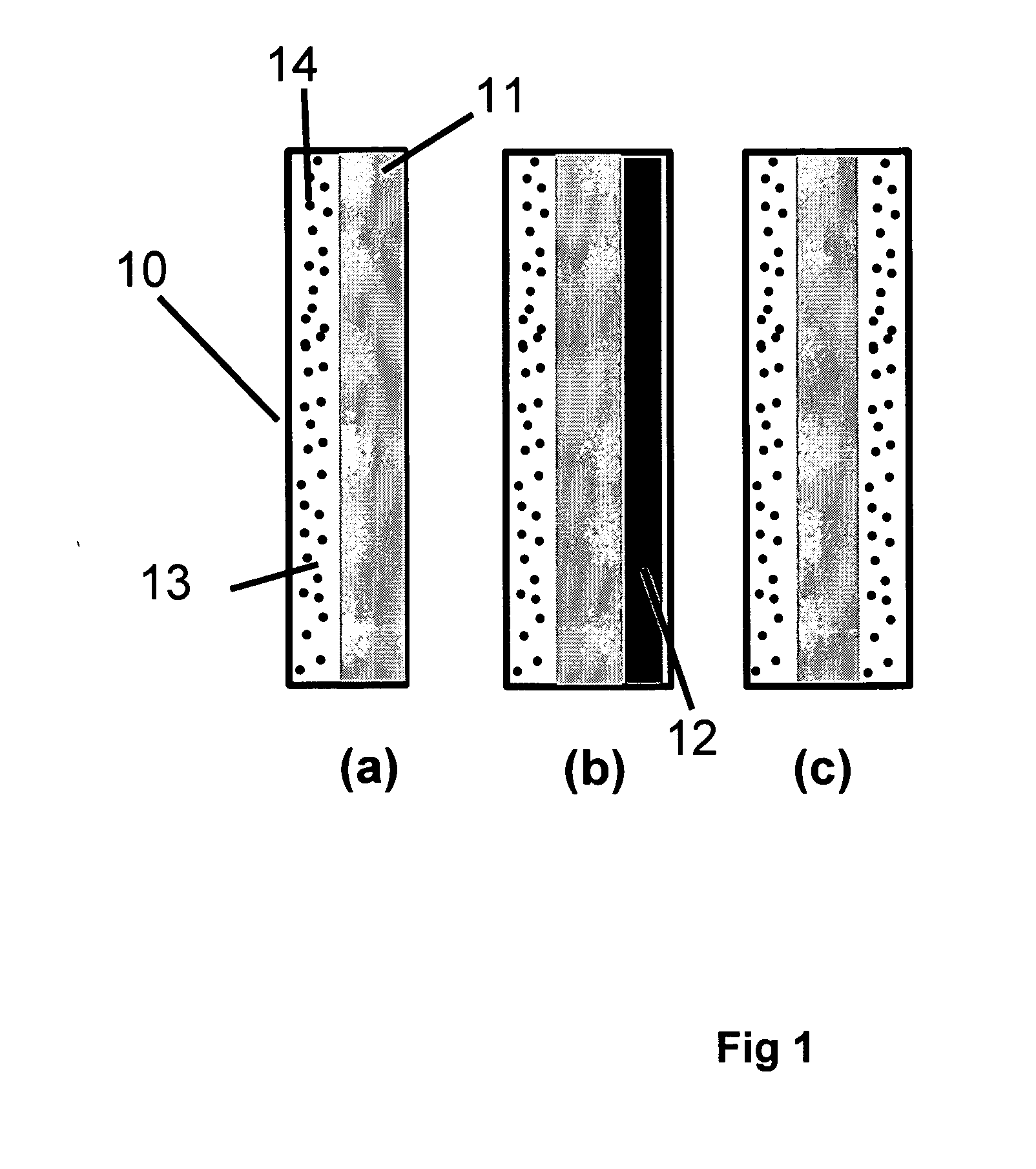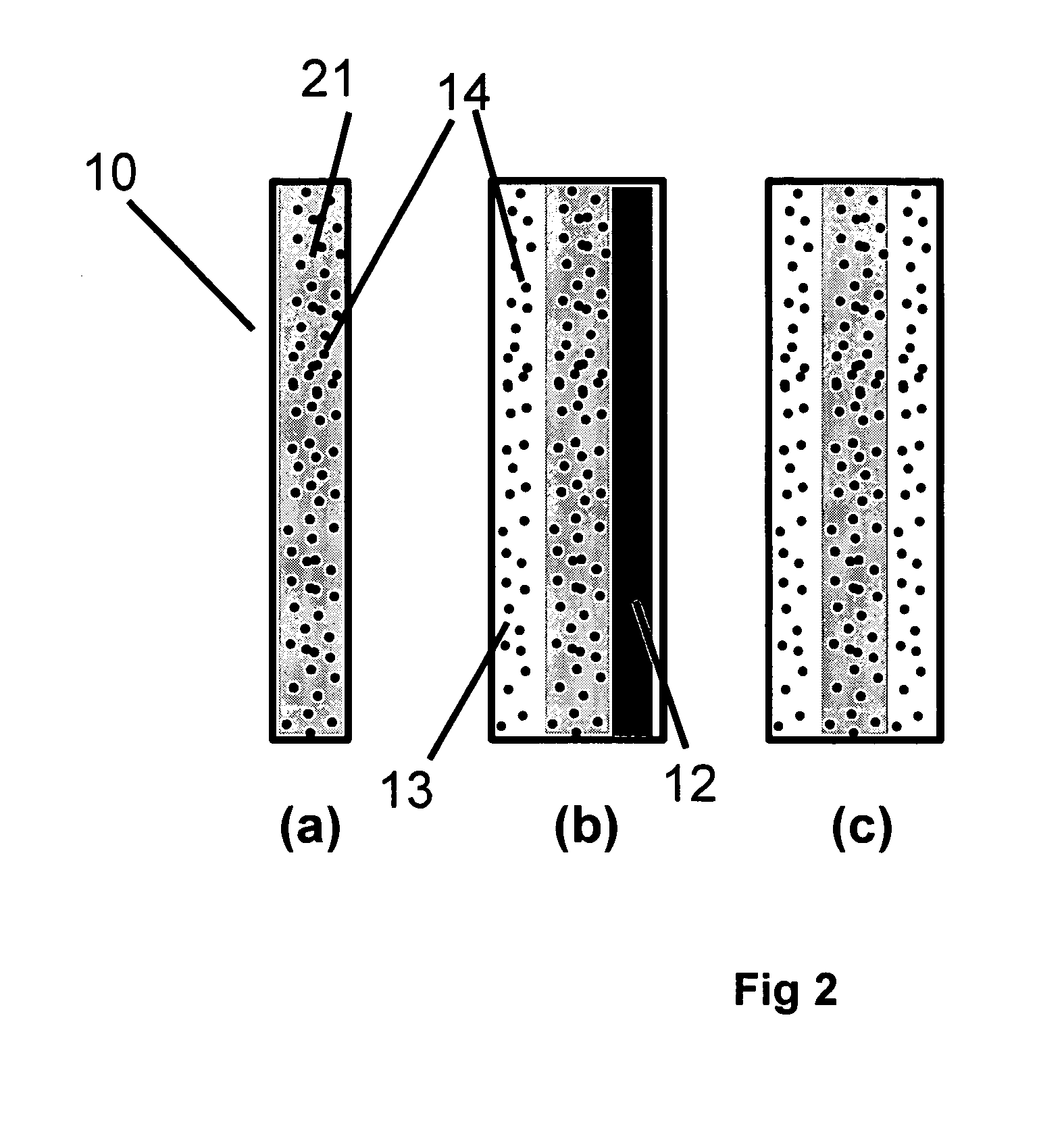Solid polymer electrolyte and process for making same
- Summary
- Abstract
- Description
- Claims
- Application Information
AI Technical Summary
Benefits of technology
Problems solved by technology
Method used
Image
Examples
example 1
[0117] In Example 1, a solid polymer electrolyte membrane was prepared as follows:
[0118] A concentrated catalyst ink consisting of platinum on a carbon support (type V11-D50 catalyst, Englehard Corporation, Iselin, N.J.) at a 1:1 weight ratio (35% water by weight), Type 1 ion exchange material, and normal propanol in the following approximate ratios, respectively, 8.54%, 4.27%, and 87.19% was prepared. This was accomplished as follows. A slurry was prepared by mixing a portion of the n-propanol with the catalyst powder in an 30 liter glass reactor (H. S. Martin, Inc., Vineland, N.J.) after evacuating it, and refilling with nitrogen. Subsequently, the slurry was pumped into a 50 liter vessel where agitation was supplied for 20 minutes by a rotor / stator agitator (Model AX200 by Silverson Machines Inc., Longmeadow, Mass.) while the solution was recirculated through a ISG motionless static mixer (Charles Ross & Sons, Hauppauge, N.Y.). To this slurry, the ionomer was added continuously ...
example 2
[0122] To illustrate the importance of the mechanical properties of the solid polymer electrolytes to the inventive materials herein, a material was made that is otherwise identical to an embodiment of the inventive materials, but has weaker mechanical properties. It thus has low fluoride release rates indicative of a chemically stable membrane, but its life is not as long as Example 1 because the polymer electrolyte membrane is not as strong as that formed in Example 1. The solid polymer electrolyte of this example was prepared as follows. First, an ePTFE membrane was prepared according to the teachings of Gore in '566 with an average mass per area of about 3.3 g / m2, a thickness of about 7.8 microns, an average ball burst strength of about 1.18 lbs, and an average Frazier number of about 42 ft3 / min / ft2 at 0.5 inches of water. The ball burst is a standard test (see for example, U.S. Pat. No. 5,814,405 to Branca, et. al.) performed on porous membranes that measures the relative stren...
example 3
[0126] To confirm the importance of the mechanical properties together with the composite layer comprising a catalyst on a supporting particle, another solid polymer electrolyte was prepared that had a composite layer of catalyst on supporting particle but had low mechanical properties. This was done as follows. A Type 1 ion exchange material with 0.8% Pt to dry ionomer weight was prepared using the procedures of Example 1. The drawdown bar was set to 0.025 cm (0.010 inches) and only one coating was done directly onto a glass substrate (no polymer film). No ePTFE was used. After drying, the solid polymer electrolyte was removed in room temperature water. The resulting solid polymer electrolyte was 20 to 26 microns thick.
[0127] The mechanical properties measured on a separate piece of this same material show that it is significantly weaker than those measured on the material of Ex. 1 (Table 6)
[0128] A different section of this solid polymer electrolyte was prepared into an MEA usin...
PUM
| Property | Measurement | Unit |
|---|---|---|
| Fraction | aaaaa | aaaaa |
| Fraction | aaaaa | aaaaa |
| Fraction | aaaaa | aaaaa |
Abstract
Description
Claims
Application Information
 Login to View More
Login to View More - R&D
- Intellectual Property
- Life Sciences
- Materials
- Tech Scout
- Unparalleled Data Quality
- Higher Quality Content
- 60% Fewer Hallucinations
Browse by: Latest US Patents, China's latest patents, Technical Efficacy Thesaurus, Application Domain, Technology Topic, Popular Technical Reports.
© 2025 PatSnap. All rights reserved.Legal|Privacy policy|Modern Slavery Act Transparency Statement|Sitemap|About US| Contact US: help@patsnap.com



